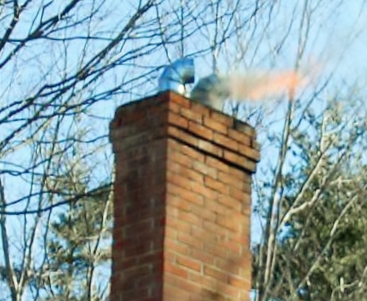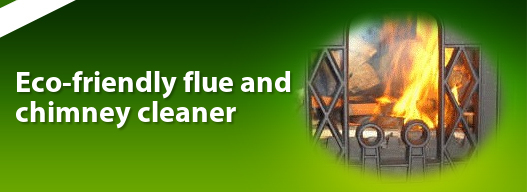 There are over 9,000 chimney fires a year in Great Britain - peaking in December, with a shocking average of 59 chimney fires each day.
There are over 9,000 chimney fires a year in Great Britain - peaking in December, with a shocking average of 59 chimney fires each day. Chimney fires can burn explosively. Noisy and dramatic, flames can sometimes be seen shooting from the chimney top itself. Victims report the sound of a chimney fire as reminding them of a not-so-distant freight train or a low-flying passenger jet.
Chimney fires reach such high temperatures that the chimney structure itself and nearby combustible parts of the house, such as the roof structure, may ignite.
Most insurance companies no longer pay out for claims made due to chimney fires unless the chimney has been swept by a professional chimney sweep.
If the fire brigade is called out to a chimney fire and it is proven that the chimney has not been properly maintained, the local council may add insult to injury and charge you for the call out.
How do chimney fires begin?
When smoke rises up the flue of a chimney, it condenses on cold surfaces coating them in highly combustible creosote. Creosote tar is a natural by-product of burning organic-based fuels, like wood, coal and peat.
When sufficient quantities of creosote have built up, a volcano-like chimney fire may erupt. Once these deposits harden, they can be difficult to remove.
Metal flue chimneys and vents, particularly single-wall flue vent connectors tend to be cooler and to collect creosote faster than warmer, insulated metal flues.
How can I stop creosote build up in my chimney?
A low, smouldering fire produces more creosote than a hotter faster-burning fire. Burning solid fuels at lower temperatures results in incomplete combustion. This leads to more deposits being carried up the chimney.
Use Flueclear to create a cleaner burn and a more complete combustion. The more complete the combustion, the more efficient your fire and the less likely you are to suffer a chimney fire.
Seasoned and kiln dried wood only
Be careful with the fuel you are using. For good combustion, wood burned should have a moisture content of no more than 17 percent. Seasoned wood should have a moisture content of no more than 30%. Kiln-dried wood often has moisture content lower than 20%.
Even seasoned and kiln-dried wood may become damp over the winter, so make sure it is stored in a dry environment. The more moisture there is in your fuel, the more likely it is that creosote will form in your flues and chimney.
Carbon Monoxide (CO) poisoning
It's not just chimney fires you need to worry about. Blocked or defective flueways and chimneys can also lead to carbon monoxide poisoning.
All chimneys and flue-ways should be cleaned and checked during the summer months to ensure they are free from debris and in full working order before the burning season.
If you have any doubts about your chimney, contact a qualified chimney sweep through one of these national organisations.
Guild of Master Sweeps
National Association of Chimney Sweeps
Association of Professional and Independent Chimney Sweeps
Flueclear - "for a cleaner and a greener burn"













